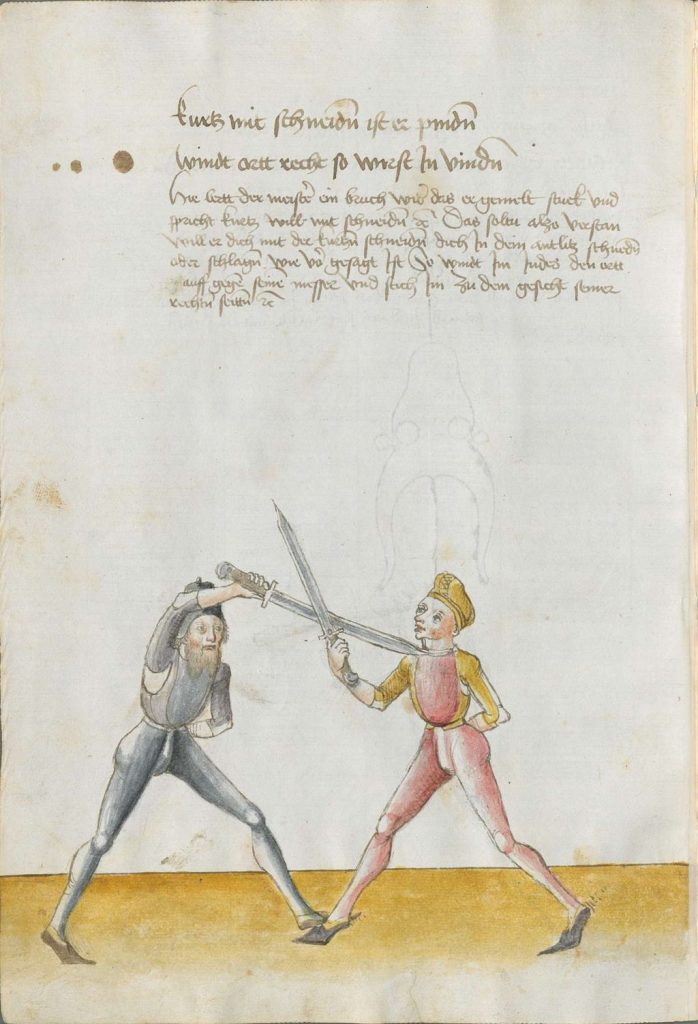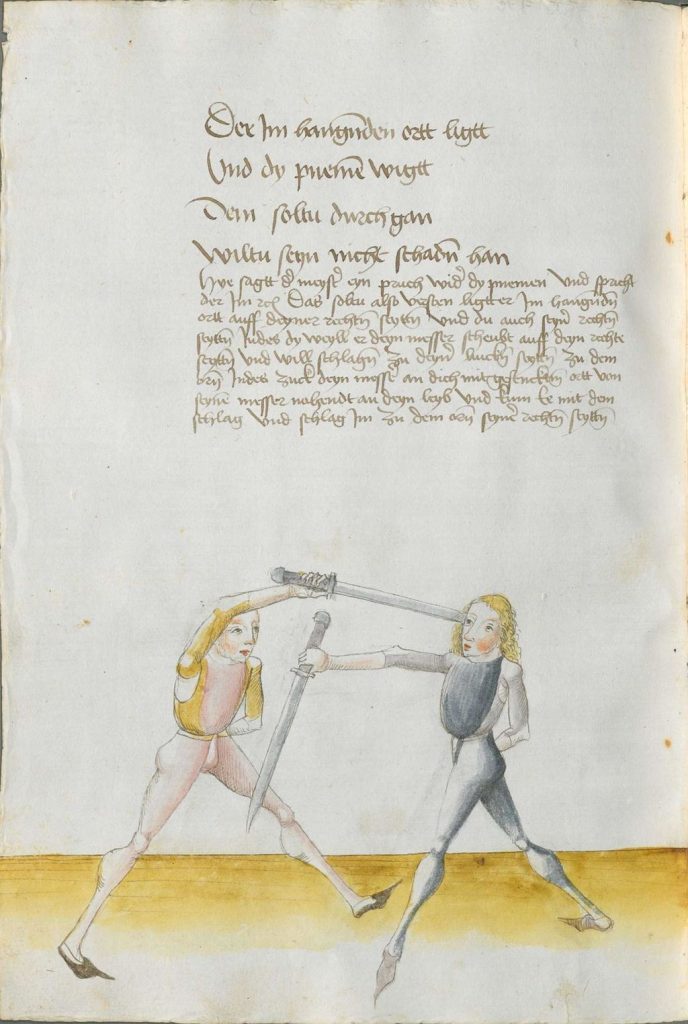About the Messer
Messer (“knife” in German) is a single-edged sword from the 15th and 16th centuries.
A common theory on the why messers became popular is that at some point, swords were banned from use by the civilian population. However, there is only evidence that only length was regulated and that the large knives were a product of the knife guild as a way to meet (or steal) demand from the sword guild.
This video from Shadiversity goes in to more detail.

Messer Masters
Johannes Lecküchner
Johannes was a 15th-century cleric and fencing master. Born in Nuremberg, he became a priest in Herzogenaurach.

Messer Manuscripts
Kunst des Messerfechtens (Cgm 582) (The Art of Fencing) was written by Johannes in 1482.
The full illustrated manual is available at Wiktenauer and original digital source at Münchener Digitalisierungszentrum (MDZ)
A modern workbook based on Leckuchner by Michael G Thomas titled Messer Fencing is a great resource for starting out.

Foundations
Stances (VIERLÄGER)
Bastion (pastei) — similar to longsword Fool guard
Look Into Land (Lug ins landt) — similar to longsword vom tag
Steer (stier) —
Boar (eber) — similar to longsword pflug
Footwork
Passing step — normal step
Triangle step — offline step
Broken steps — a shuffle
Cuts
Three Wonders (Drei Wunder)
Cuts, thrusts, and slices
Over cut (oberhau)
Under cut (unterhau)
Thrust/Stab (stechen)
Slice (abschneiden)
The Six Strikes (Die vi Häu)
Wecker
Entrüsthau
Zwinger
Geferdhau
Zornhau
Geferdhau
Winker
Counters
Lemstuck
Bogen
Ansetzen

